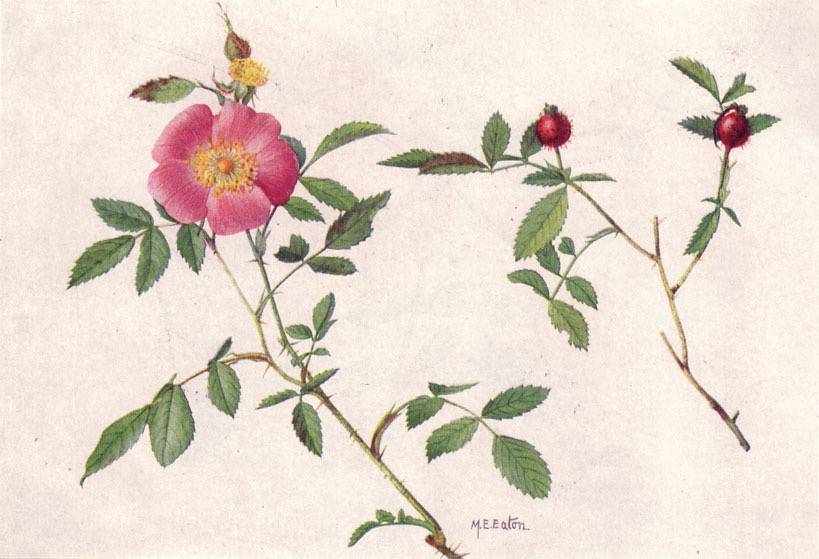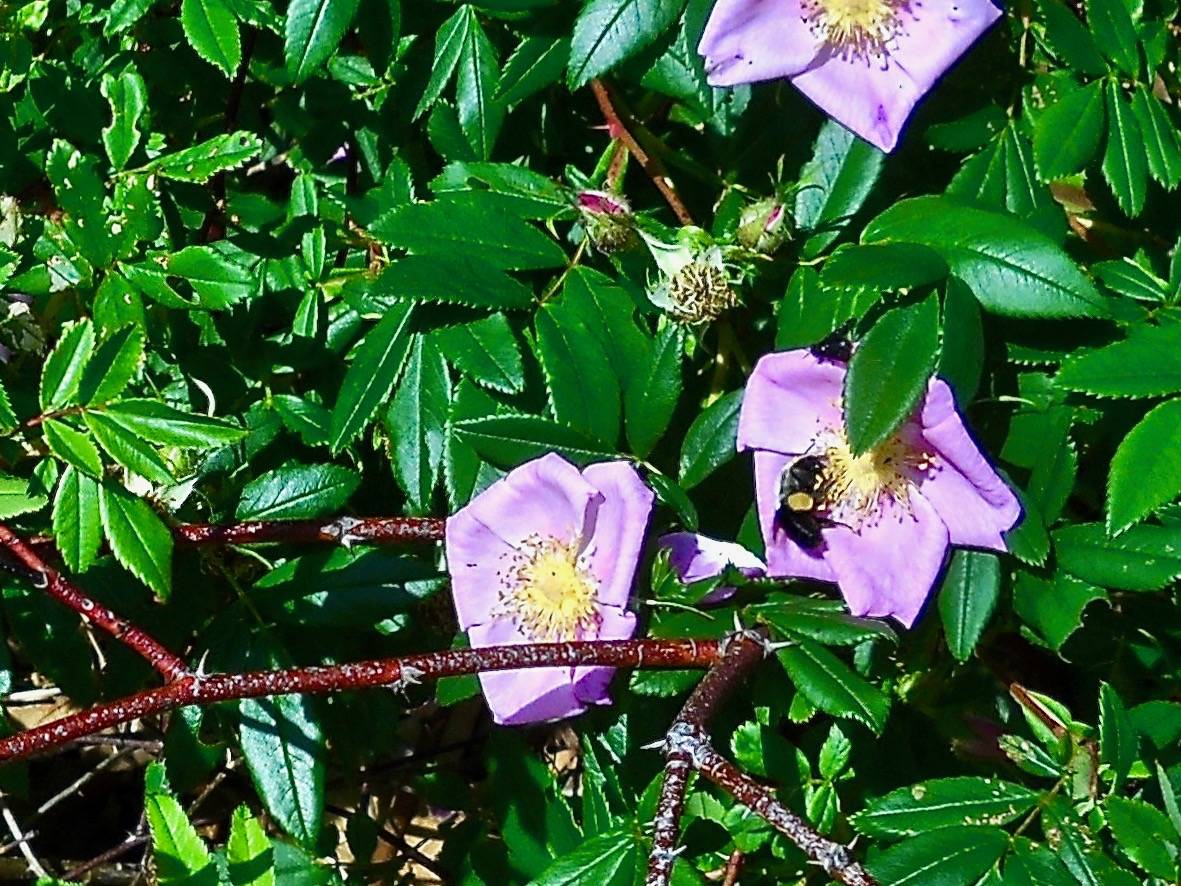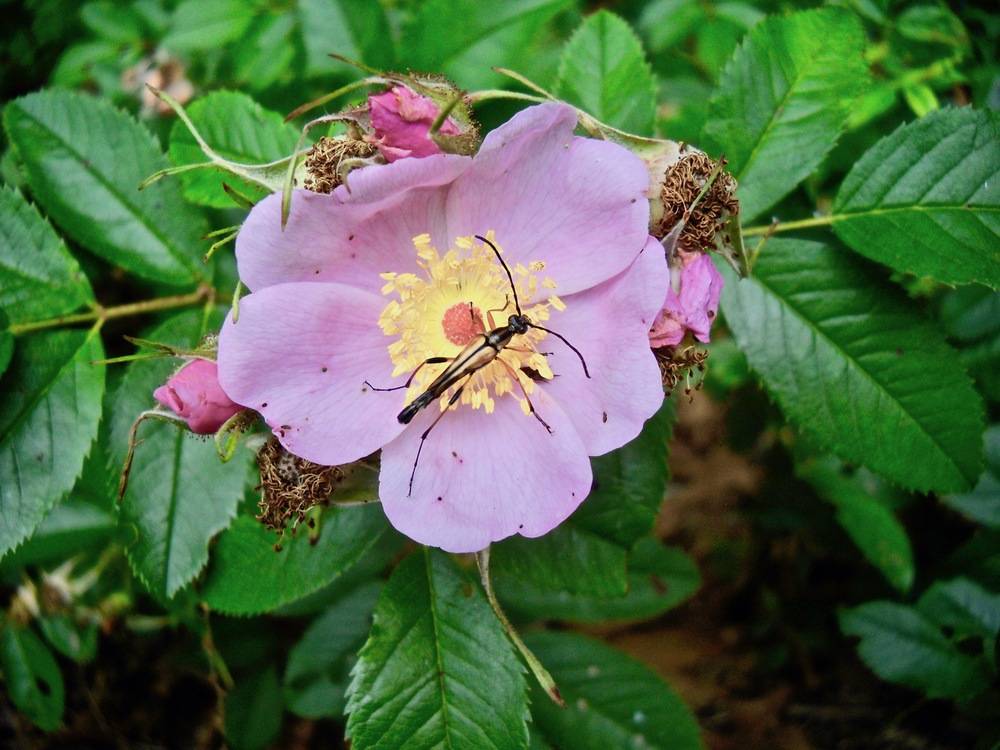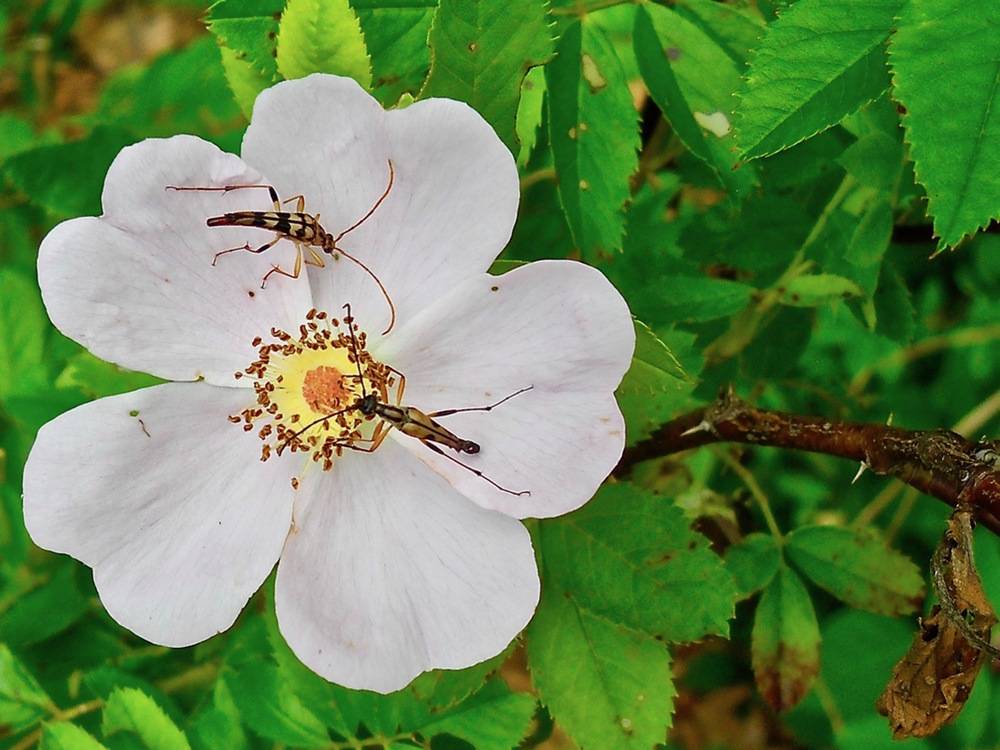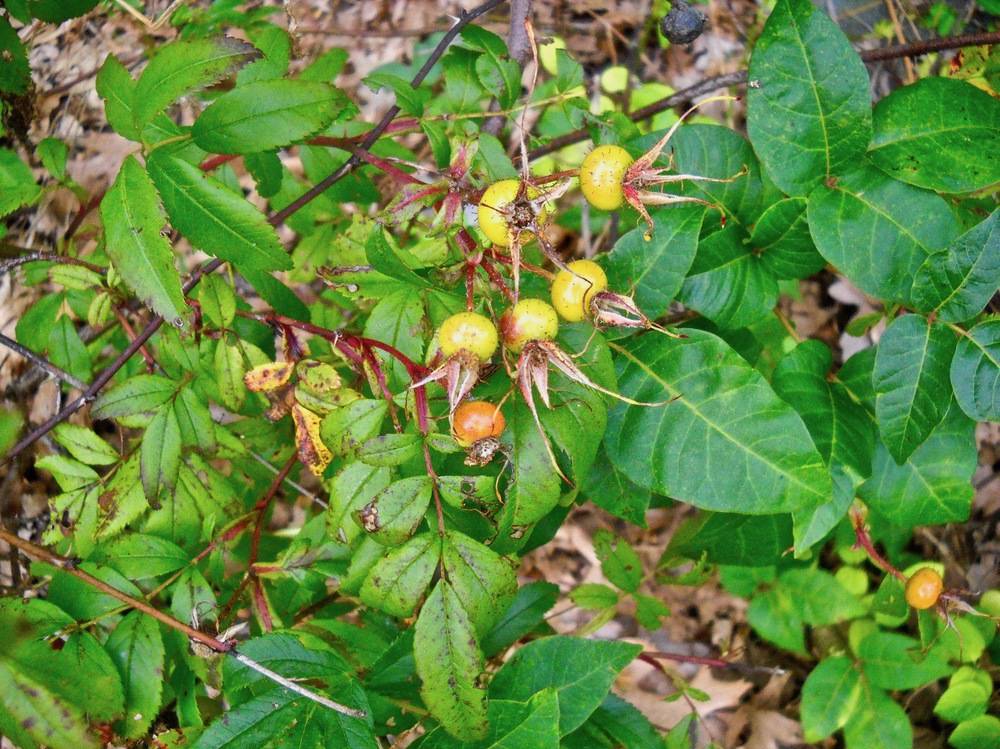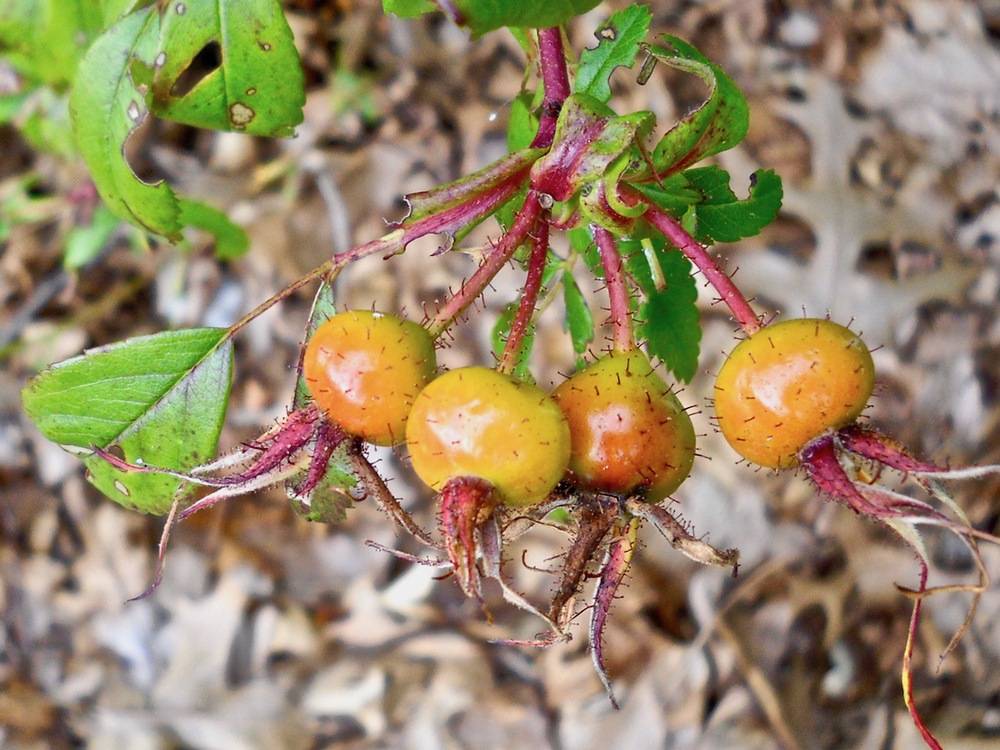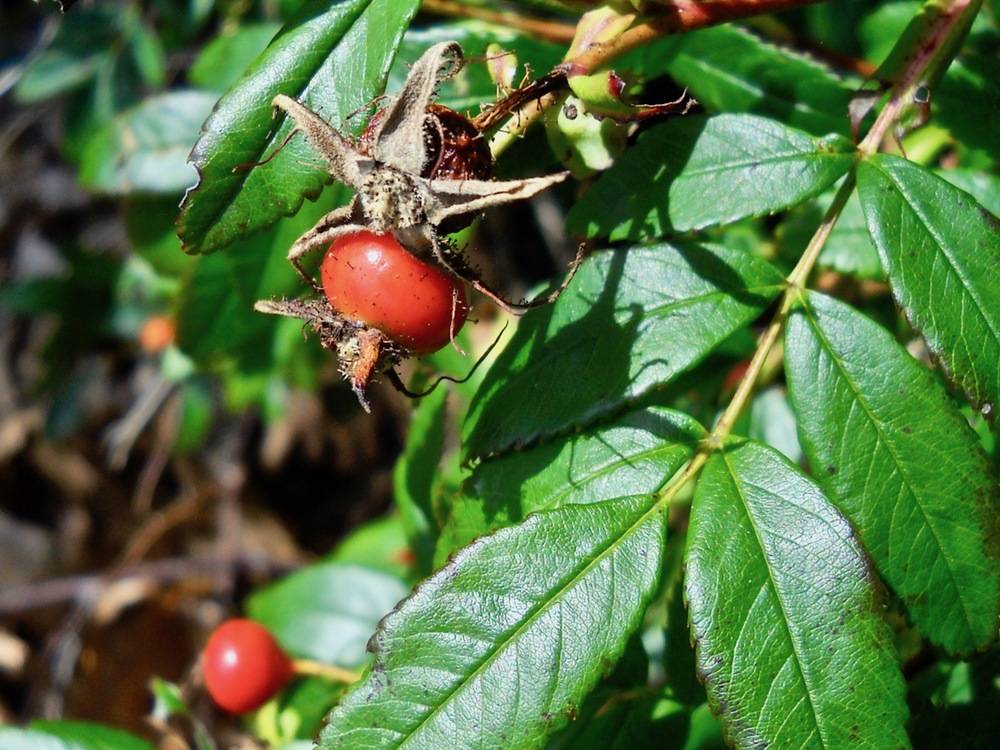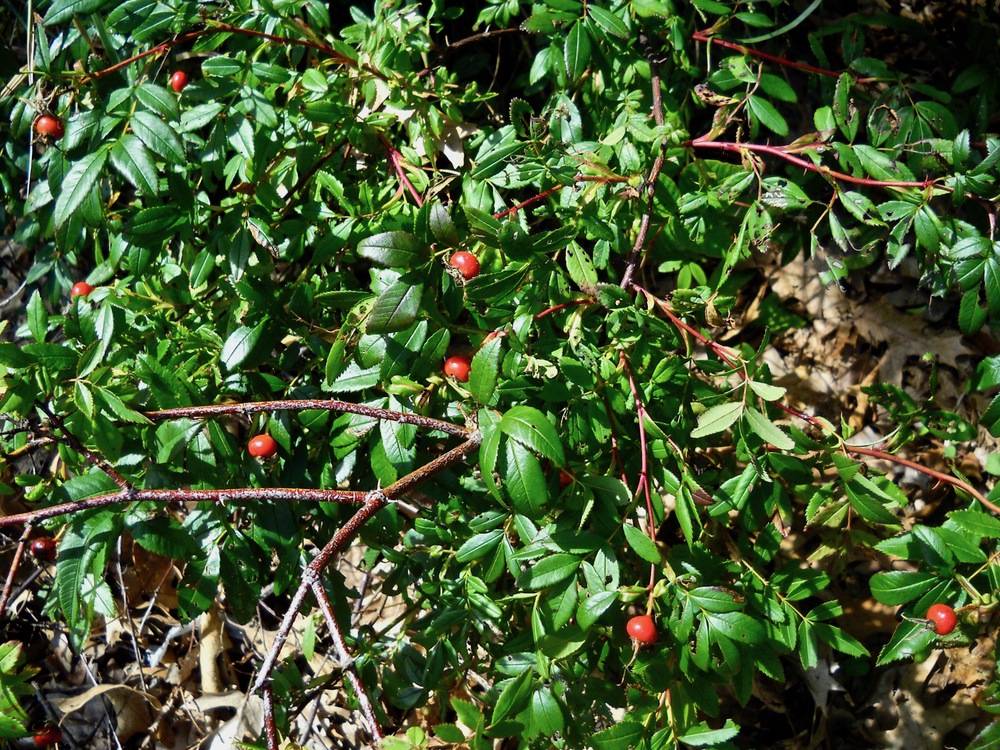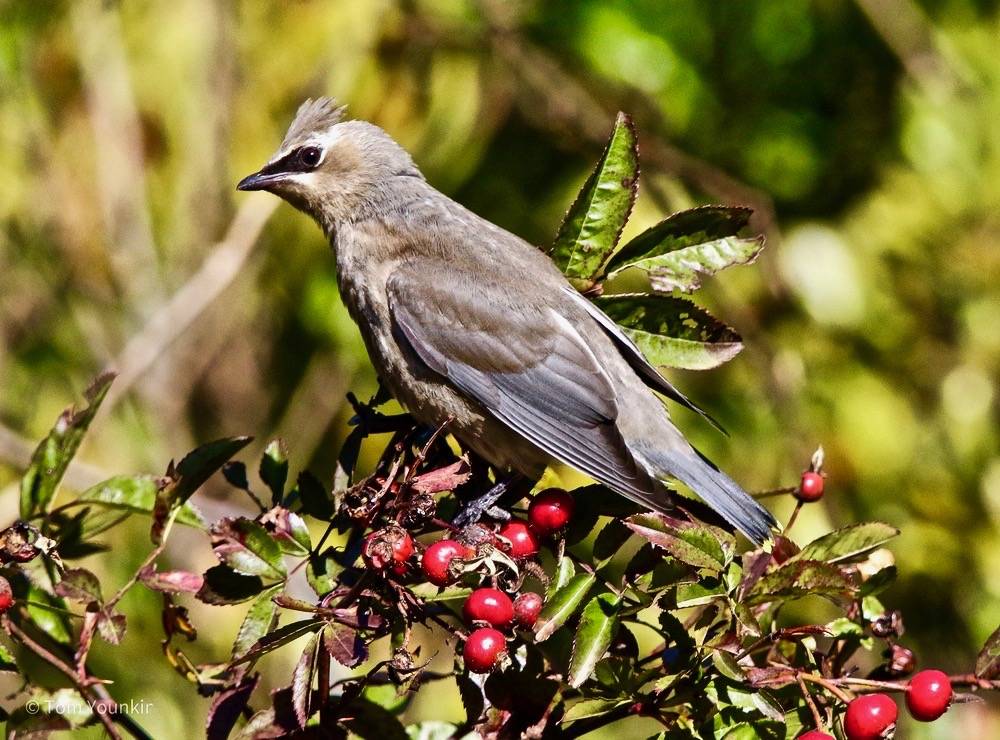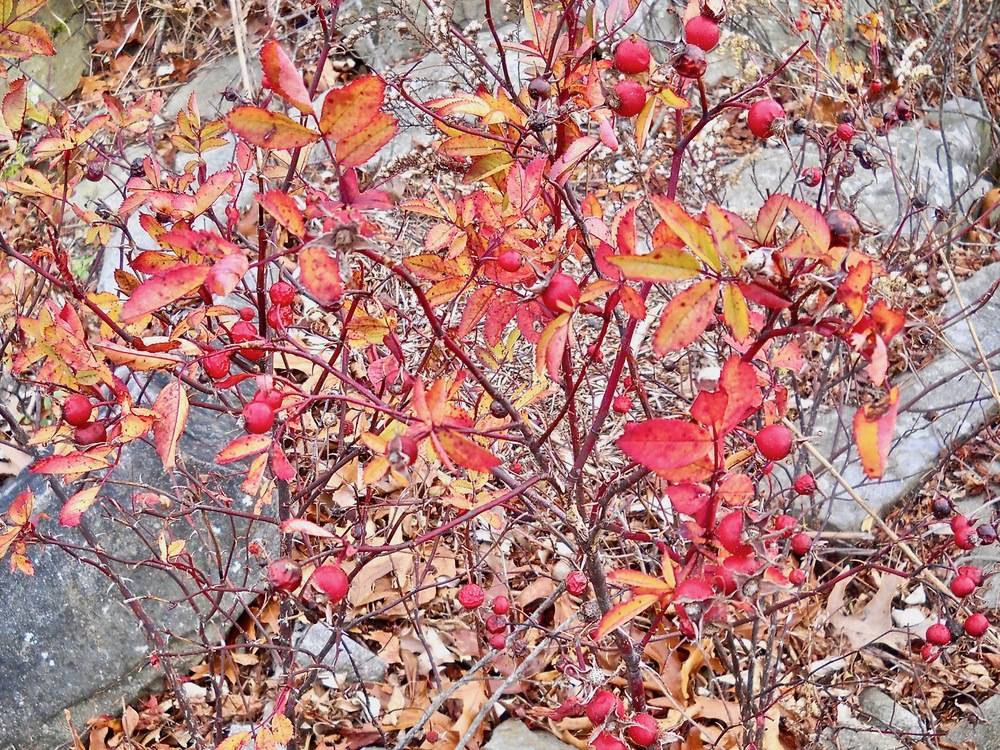Carolina rose
The Carolina Rose is a prickly shrub native to eastern North America. It occurs in a wide variety of open habitats where birds are likely to visit, such as abandoned fields, fence rows, the edge of woodland and prairies, roadsides, and along railroads. It appears to handle dry and wet soils equally well since it is found on dunes as well as along stream beds.
At Salter Grove, it seems to tolerate some amount of salinity since sparse clumps occur along the Marsh trail near the high tide line, and at the junction of the causeway and breakwater. Rather than growing from a main stem above ground, branching occurs below ground so it is difficult to know the origin of adjacent stems. Despite having a similar branching habit, its sparse and slender stems do not form the dense thickets that is characteristic of its introduced relative, the beach rose. Except when it is flowering, it is barely noticeable among the surrounding vegetation.
The fragrant pink flowers bloom for about a month starting in early June. They do not offer nectar but nonetheless attract various pollen-seeking insects, notably bumblebees and flower longhorn beetles (Strangalia famelica and Strangalia luteicornis). The bright red fruits, or rose hips, are a winter food for birds and small mammals. After the fleshy pulp is digested, the large seeds that remain are then defecated far from the parent plant.
Native Americans used the roots of Carolina rose to make an ointment for soothing sore eyes. The fruits were used to alleviate stomach troubles and to promote digestion. Presumably, their high concentration of Vitamin C and antioxidants led to their popularity in treating scurvy, and various infections. Before grocery stores and supermarkets became reliable sources for food, rose petals and rose hips were often used to produce jams, jellies, vinegars, and syrups at home.
For more information:
https://gobotany.nativeplanttrust.org/species/rosa/carolina/?pile=woody-angiosperms
http://dendro.cnre.vt.edu/dendrology/syllabus/factsheet.cfm?ID=1111
https://www.fs.fed.us/wildflowers/plant-of-the-week/rosa_carolina.shtml
https://www.illinoiswildflowers.info/prairie/plantx/pasture_rosex.htm
https://en.wikipedia.org/wiki/Rosa_carolina
https://cwf-fcf.org/en/resources/encyclopedias/flora/wild-roses.html
http://naeb.brit.org/uses/search/?string=rosa+carolina

